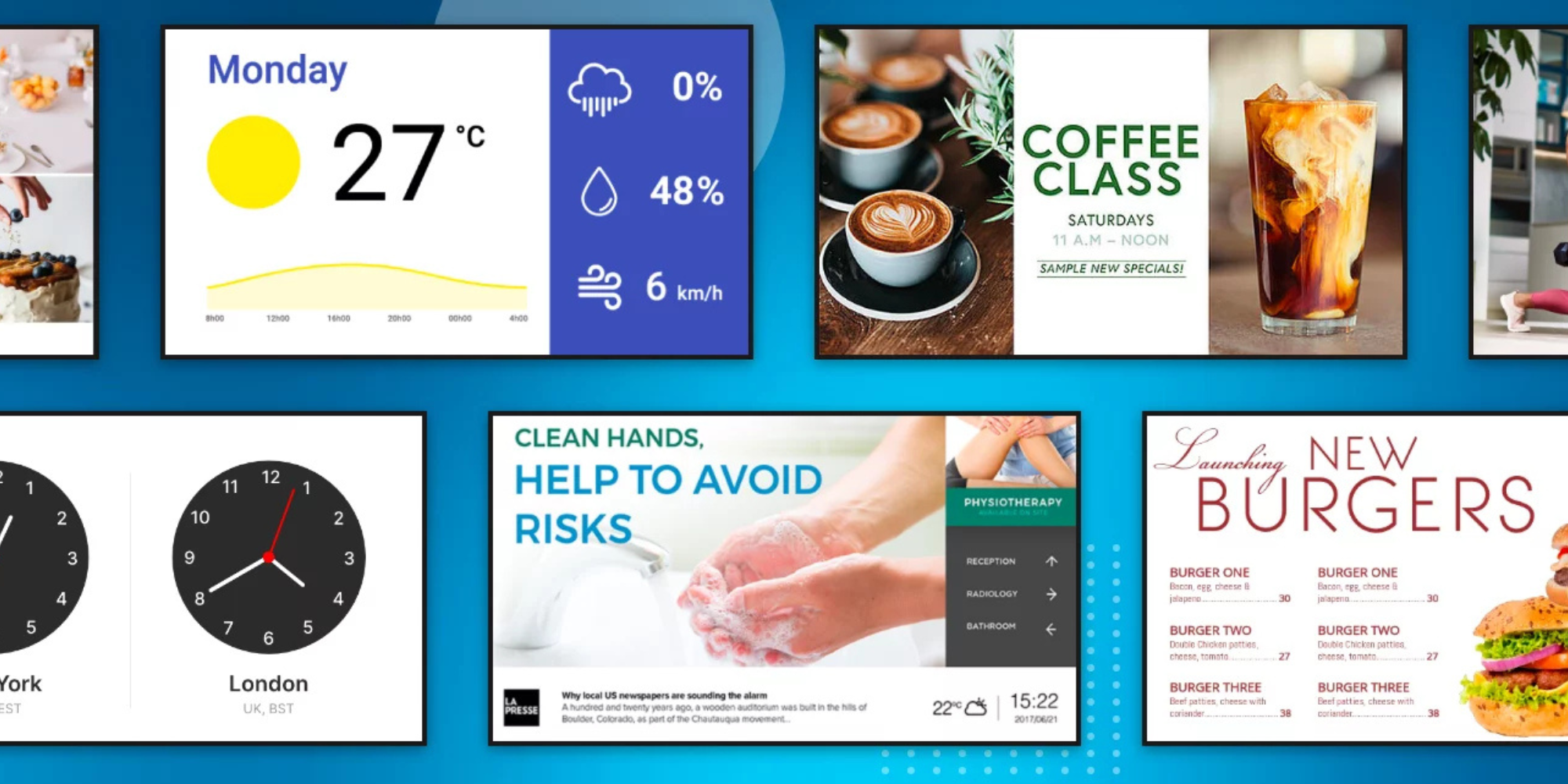
Best Practices for Screen Sharing in Large Organizations
Collaboration and communication in large organizations have greatly improved thanks to screen sharing. It’s more than just a tool for displaying slides or documents—it ensures everyone stays connected and in sync, regardless of location. From making remote work more efficient to enhancing training programs, the advantages of screen sharing are far-reaching.
Why is Screen Sharing Crucial for Large Organizations?
Screen sharing has become an indispensable tool for large organizations, primarily due to its role in enhancing communication and collaboration across different departments and geographical locations. In today’s fast-paced business environment, the ability to share content in real-time is not just a convenience but a necessity. This technology allows for the efficient dissemination of information, enabling team members to view the same material simultaneously, regardless of their physical location.
This is crucial for ensuring all team members are on the same page, speeding up decision-making processes, and improving productivity. Moreover, screen sharing facilitates a more interactive communication form than traditional conference calls or emails. It allows presenters to demonstrate processes directly, troubleshoot issues, and provide immediate clarification.
Enhances Collaboration Across Different Locations
Screen sharing significantly enhances collaboration across different locations by enabling team members to share and view content in real-time, regardless of location. This real-time information sharing ensures that all participants look at the same data, diagrams, or presentations, facilitating a unified understanding and project approach. It breaks down the distance barriers, making it as effective as if all team members were sitting in the same room, discussing and brainstorming over the same documents.
Facilitates Remote Work and Global Meetings
In the era of globalization, screen sharing stands out as a vital tool that facilitates remote work and the conduct of global meetings. It allows organizations to seamlessly connect with employees, stakeholders, and clients worldwide, making geographical distances irrelevant. Through screen sharing, presentations, workshops, and discussions can be conducted with participants across different time zones without physical travel.
Supports Training and Development at Scale
Screen sharing is instrumental in supporting large-scale training and development within large organizations. It offers a dynamic platform for delivering training sessions to employees in various locations, ensuring everyone has access to the same information and training materials. This is particularly beneficial for ensuring consistency in training and standards across the organization, regardless of the physical location of its employees.
Best Practices for Secure Screen Sharing
Ensuring the security of screen sharing is paramount in protecting sensitive information during online meetings and collaborations. The first step towards secure screen sharing is utilizing enterprise-grade screen-sharing tools that come equipped with advanced security features. These tools often include end-to-end encryption, which ensures that the data shared during a screen-sharing session is only accessible to the intended participants.
Use Enterprise-Grade Screen Sharing Tools
Choosing enterprise-grade screen-sharing tools is essential for maintaining high security during online collaborations. These tools are designed for organizational use, offering robust security measures that protect sensitive information from unauthorized access. They provide a secure platform for teams to share screens confidently, knowing their data is protected.
Tools with Advanced Security Features
Opting for tools that come equipped with advanced security features is crucial. Features like multi-factor authentication, secure access controls, and managing user permissions ensure that only authorized individuals can initiate or join a screen-sharing session. These advanced security measures are pivotal in safeguarding data and maintaining privacy during screen sharing.
Implement End-to-End Encryption
Implementing end-to-end encryption in screen-sharing sessions is one of the most effective ways to protect data. This encryption ensures that the information shared between the presenter and participants is fully encrypted, making it inaccessible to anyone outside the session. End-to-end encryption is a powerful barrier against potential eavesdropping, providing an additional layer of security for sensitive communications.
Ensuring Privacy During Screen Sharing
Ensuring privacy during screen-sharing sessions is critical for maintaining the confidentiality of sensitive information. Utilizing privacy screens or blur tools plays a significant role in hiding specific data that isn't meant to be shared with all participants. This approach is precious when navigating through documents or applications containing confidential information, allowing presenters only to display what is necessary for the discussion.
Use Privacy Screens or Blur Tools
Privacy screens or blur tools are essential for hiding sensitive information during screen-sharing sessions. These tools allow presenters to obscure specific parts of their screen containing confidential data, ensuring that only relevant information is visible to participants. This approach is particularly crucial when sharing screens in environments where sensitive information is prevalent, providing a layer of security and privacy.
To Hide Sensitive Information
Privacy screens or blur tools primarily aim to protect sensitive information from being inadvertently shared. By selectively blurring or hiding parts of the screen, presenters can prevent the exposure of personal or proprietary data, maintaining the confidentiality of the information being discussed. This practice is vital in preserving the integrity and security of sensitive data during collaborative sessions.
Announce Before Sharing Your Screen
Announcing before sharing your screen is a straightforward yet crucial step in ensuring privacy. This practice informs participants that a screen share is about to commence, allowing them time to minimize or close any sensitive material on their screens. Announcing ahead of time helps avoid unintentional sharing of private information, ensuring that all participants are prepared and their privacy is respected.

Guidelines for Effective Screen Sharing
Preparing content in advance is critical to effective screen sharing, especially in large organizations. This preparation ensures the presentation is smooth, and all necessary information is ready to be shared. It minimizes disruptions and keeps the audience engaged.
Additionally, using clear and visible pointers during the presentation can significantly enhance understanding. It guides the audience's attention to specific focus areas, making the shared information more accessible to follow and comprehend. Moreover, choosing the right screen-sharing tool is crucial for a successful session.
Prepare Content in Advance
Preparing content in advance is crucial for ensuring that screen-sharing sessions are practical and efficient. This step allows presenters to organize their materials, anticipate questions, and address potential issues before the presentation begins. By having all necessary information ready and accessible, disruptions are minimized, and the session can proceed smoothly, keeping the audience engaged and focused.
To Ensure a Smooth Presentation
Preparing content in advance ensures a smooth presentation. This preparation helps create a structured flow of information, making it easier for the audience to follow along. It also reduces the likelihood of technical difficulties interrupting the session, thereby maintaining the audience’s attention and interest throughout the presentation.
Use Clear and Visible Pointers
Using clear and visible pointers during a screen-sharing session is essential for guiding the audience's attention to specific areas of the screen. This practice helps highlight key points and data, making the shared information more understandable and accessible. Clear pointers can also significantly enhance the audience's ability to grasp complex concepts or details, leading to a more productive and interactive session.
Choosing the Right Screen-Sharing Tool
Selecting the right screen-sharing tool is vital for successful virtual collaborations within large organizations. The key is to assess compatibility with existing platforms, ensuring that the chosen tool integrates seamlessly with the organization's current systems and workflows. This compatibility minimizes technical issues and streamlines the sharing process, making it more efficient.
Assess Compatibility with Existing Platforms
Assessing compatibility with existing platforms is a critical first step in choosing the proper screen-sharing tool. It's essential to select a tool that works well with the organization's software and systems already in use. This ensures the tool can be quickly adopted without requiring significant changes to current workflows, thereby minimizing disruptions and maximizing efficiency.
Ensure Seamless Integration
Ensuring seamless integration of the screen-sharing tool with other organizational tools and platforms is essential for smooth operation. A tool that integrates well facilitates easier collaboration, enhances productivity, and reduces the time spent troubleshooting technical issues. Seamless integration supports a more cohesive and efficient work environment, enabling employees to focus on the task rather than technical difficulties.
Evaluate Security Features
Evaluating the security features of a screen-sharing tool is paramount to protecting sensitive information shared during sessions. Look for tools that offer robust security measures, such as end-to-end encryption, to ensure that data remains secure from unauthorized access. Prioritizing security in the selection process helps safeguard the organization's confidential and proprietary information, maintaining trust and compliance.
Training Employees on Screen Sharing
Training employees on screen sharing is crucial in enhancing the effectiveness of virtual collaborations within an organization. It involves educating them on best practices for secure and effective sharing, including the dos and don'ts of presenting and sharing sensitive information. This training ensures that all team members are proficient in using screen-sharing tools, understand how to manage the privacy settings and troubleshoot common issues that may arise during a session.
Best Practices for Secure and Effective Sharing
Adopting best practices for secure and effective sharing is essential for maximizing the benefits of screen-sharing technology. This includes using tools with robust security features, such as end-to-end encryption, to protect sensitive information. Additionally, ensuring that all shared content is prepared and reviewed in advance can significantly enhance the effectiveness of the presentation, making the information conveyed clear and understandable for all participants.
Including Dos and Don'ts
Incorporating a list of dos and don'ts into screen-sharing training helps employees understand the expectations and guidelines for sharing content securely and effectively. Dos may include verifying the connection's security before sharing and using explicit annotations to guide the audience. Don'ts could highlight the importance of not sharing sensitive information unintentionally and avoiding unnecessary personal or confidential data sharing.
Troubleshooting Common Issues
Troubleshooting common issues is a critical skill for anyone involved in screen sharing. Employees should be familiar with basic troubleshooting steps to resolve typical problems such as audio or video not working, issues with screen resolution, or difficulties with participant access. Being prepared to address these issues promptly ensures that screen-sharing sessions are not unduly interrupted and can proceed smoothly.
Monitoring and Improving Screen-Sharing Practices
Monitoring and improving screen-sharing practices are vital for communication and collaboration in large organizations. This process involves regularly reviewing the effectiveness of current screen-sharing sessions, identifying any challenges or areas for improvement, and implementing changes to enhance the overall experience. By gathering feedback from participants and presenters, organizations can gain valuable insights into how screen-sharing sessions can be optimized for better clarity, engagement, and security.
Additionally, staying updated on advancements in screen-sharing and digital signage technology is essential for maintaining efficiency and security. Organizations should regularly evaluate new tools and features that can improve their existing setup. Rise Vision offers a free trial of digital signage solutions that keep pace with the latest innovations, ensuring their platform evolves to meet the changing needs of businesses and educational institutions. By adopting these advancements and integrating them into current practices, organizations can ensure their screen-sharing capabilities remain cutting-edge, supporting the growth and evolving demands of their teams and projects.
More From Our Blog
-

Screen Sharing for Workplace Collaboration | Rise Vision
Screen-sharing technology has transformed how teams communicate and work together in real-time, regardless of their location. It can make presentations more engaging, support remote work, and speed[…]
Read More -

How to Use PowerPoint for Digital Signage
To create stunning, attention-grabbing, and effective digital signage content, you need the help of content creation and presentation tools. One of the most popular is Microsoft PowerPoint, owing to[…]
Read More -

120 Digital Signage Content Ideas
So…. you decided you would invest in some digital signage software and you need some ideas for ways you can make it stand out. This article is your go-to source for the best digital signage content[…]
Read More
Keep Your Displays Interesting – Pick New Templates Every Week!
Every week, we send template recommendations that will make you look great and improve your audience experience. And the best part, they save up to 16 hours of content creation time every week!
12,300+ Organizations Trust Rise Vision, You Can Too
Schedule a Free Demo
You deserve the #1 all-in-one platform for digital signage, screen sharing, and emergency alerts.



































